Mandalay, Myanmar
What is the place, this name Mandalay I’ve heard so many times and know nothing about?
We arrived in Myanmar (formerly known as Burma) at the Mandalay airport, boarded a bus and endured a bumpy 45 mins drive to our hotel. Our hotel was quite nice but near the train station that was under regular construction. The trains occasionally trickled by, and like everything else that moves, they kick up the dust that coated the streets everywhere. All along the construction site a shanty town was built up with families cooking food over fires and young children running around half naked.
Mandalay is the biggest city in the northern half of Myanmar, with a population around 1.5 million, it feels big and small at the same time. It’s a sprawling city with large city blocks and few buildings above 15 stories. The haze of dust and smoke hangs suspended over the city, and I wonder if it’s always like this?
We kept seeing the same tourists here and there, but maybe that’s because tourism in Myanmar is somewhat restrictive. To receive a tourist visa you are required to find accommodation at a registered hotel, at least at first — so airbnb is not so popular.
Burmese
Like many places on our journey, everything seemed a little different at first, or at least surprisingly different from neighboring Thailand. There is a 30-min time difference — who does that? Most men where longyi (lon-jee), like sarongs for men just as we saw in Bali. The Burmese written language looks quite different from Thai, although it actually looks related to the old script language you see in some old Thai temples (Lanna script) — lots of circular characters.
Betel nut is chewed and spat everywhere. It stains the streets and sidewalks as well as people’s teeth. I’ve read that like nicotine it works like a mild stimulant and also is terrible for everything in your mouth. So I can imagine why it has been banned in some countries and discouraged in many others although there are exceptions made for traditional cultural practices. Because betel nut has a traditional connection to almost all cultures across Southeast Asia.
Another thing you will notice immediately are peoples faces covered with chalky beige paste. This is thanaka. For thousands of years the Burmese takes branches from thanaka trees, and rub cuts of it with water over a special grinding stone producing a paste to smear on the face — mostly cheeks and foreheads of women, girls and some young boys. Why? — it’s supposed to be a good sunblock and for a little while it offers a cooling sensation. We saw the thanaka wood cuts sold all over Myanmar, from local markets to streets vendors marketing to tourists.
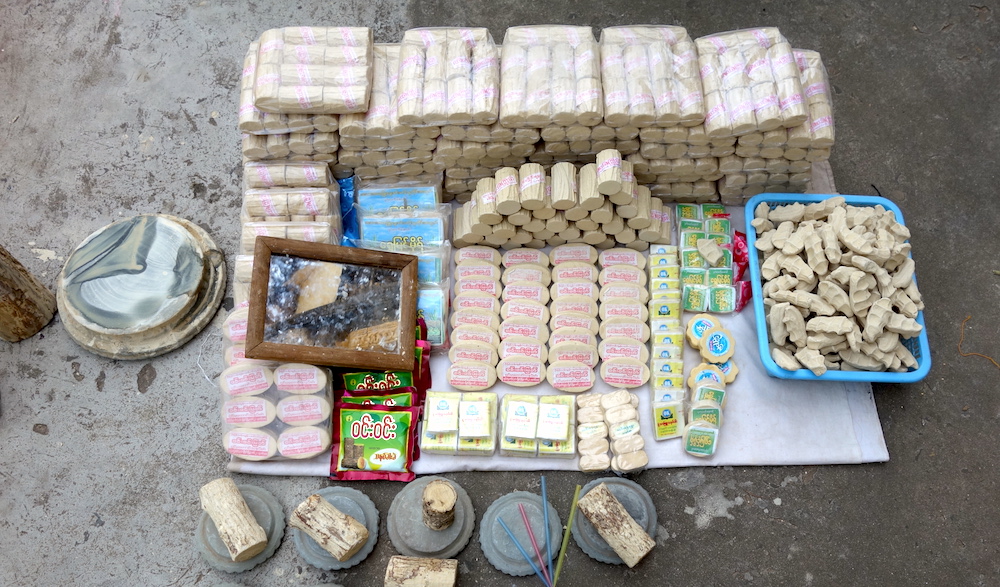 Various thanaka products
Various thanaka products
Mandalay Palace
In the northern area of Mandalay is the massive 2 square kilometer moat-lined citadel which houses Mandalay Palace. The palace, initially constructed in the mid-19th century, did not appear to be well maintained. That’s in part because only a few decades after it was built the British invaded, colonized Burma and repurposed the whole citadel as a military fort. Later during World War II the Japanese occupied the citadel as a supply depot and which meant it was target for allied bombing. Most of the palace was lost and only restoration efforts only began in 1989.
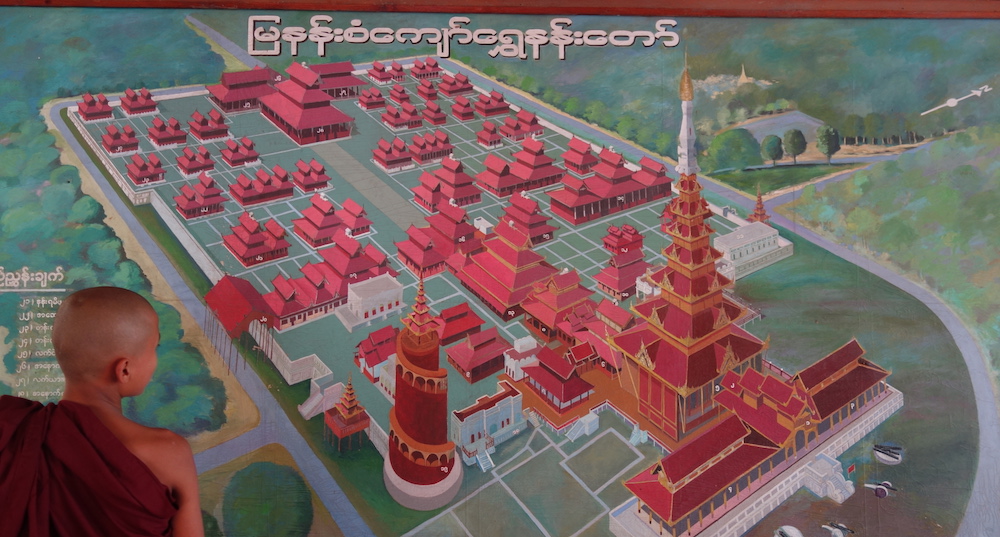 Diagram of Mandalay Palace
Diagram of Mandalay Palace
The compound grounds (the part within the moat but outside the inner palace grounds) is still protected for military functions and most of it is off limits. Though rebuilt with non-traditional materials, the palace had unique touches that referenced the styles of a mostly forgotten royal history in Myanmar.
 Mandalay Palace from the watch tower
Mandalay Palace from the watch tower
Min Kun
Take a boat a half hour ride from Mandalay up the Ayeyarwady River (or Irrawaddy) and you will see a enormous almost cubic stupa rising on the horizon. The stupa is located in Min Kun (or Mingun), a small town with a number of famous Buddhist monuments. The brick stupa was built in the late 18th century and if completed would have been the largest in the world. Since then it has suffered the effects of many large and small earthquakes leaving the stupa cracked and toppled in many places.
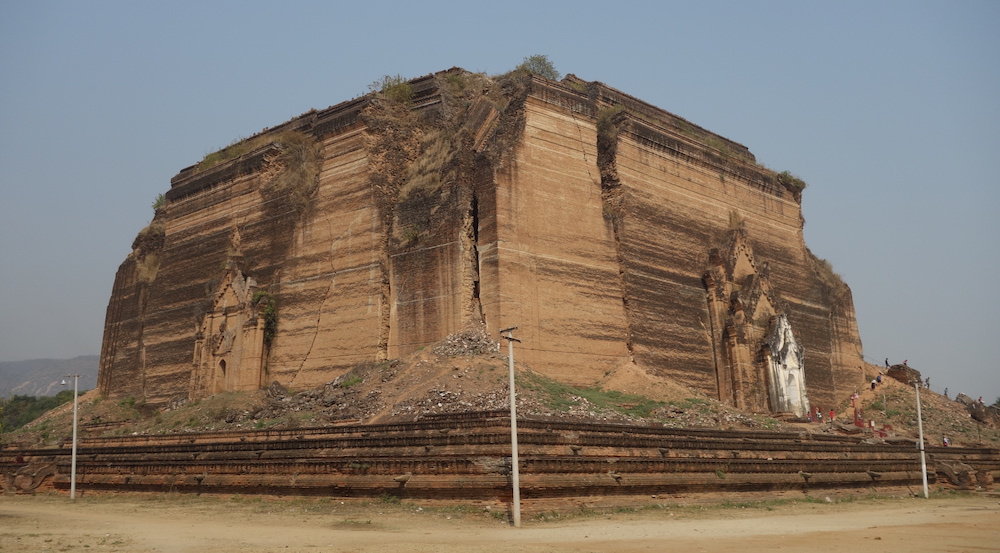 Minkun stupa
Minkun stupa
Min Kun is also known for having the largest functional working bell in the world. Standing in front of it you have no idea of this, since there was no sign visible to claim this title but we were informed by a very friendly guide that we hired for the hour or so that we roamed around the town. After the bell we visited some pagodas and before returning to the boat passed by two giant lion statues on the river front — also victims of the earthquakes the intended forms were fairly unrecognizable.
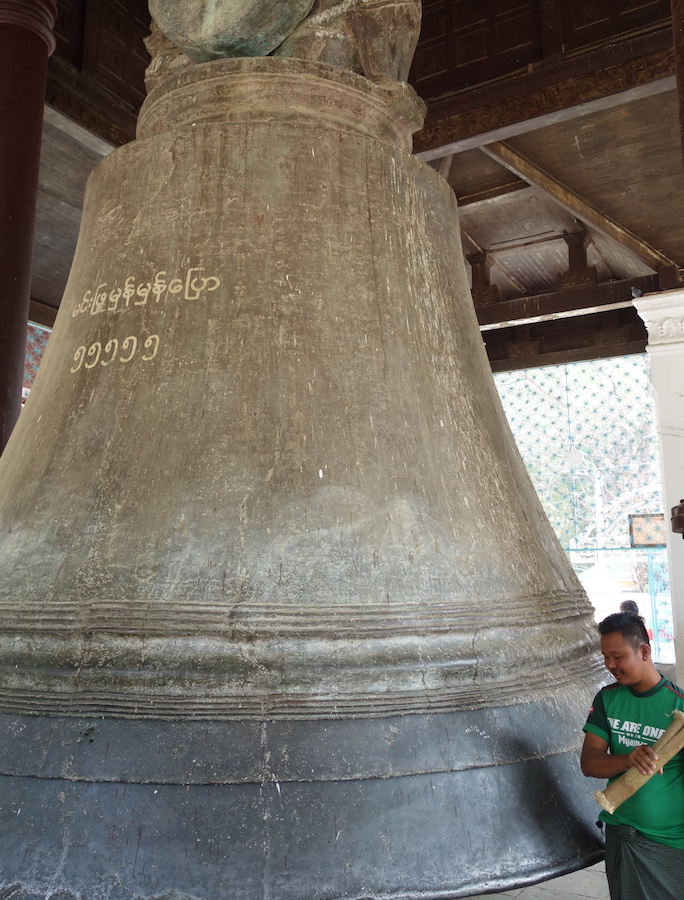 Minkun bell
Minkun bell
U Bein Bridge and Mandalay Hill
In the two weeks that we spent in the country we saw almost no clouds, few mountains and a handful of tall buildings, so we almost always had a clear view of the horizon for sunsets. But never once did we see the sun touch the horizon — before that it would always dim and fade away into the dusty haze. Still there some good sunset spots near Mandalay.
Mandalay Hill north of the city (the city is actually named after the hill) has historically had some important pagodas and monasteries making it an important pilgrimage site. We only went to the main temple site at the peak, Sutaungpyei Pagoda, to enjoy the sunset with the crowds.
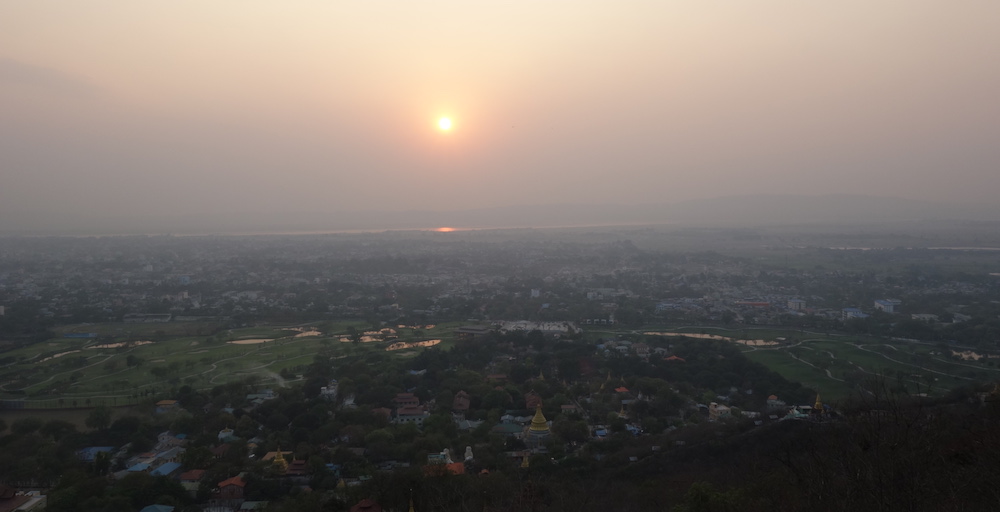 Sunset from Mandalay Hill
Sunset from Mandalay Hill
U Bein Bridge that spans a shallow (unless its rainy season) lake that connects Amarapura, a former royal capital of Myanmar, to the east, away from the floods of Ayeyarwady. The 1.2 km teak wood bridge attracts lots of visitors (foreign and local) and provided a picturesque setting to our last day in Mandalay before we took off for Bagan.
 U Bein Bridge
U Bein Bridge
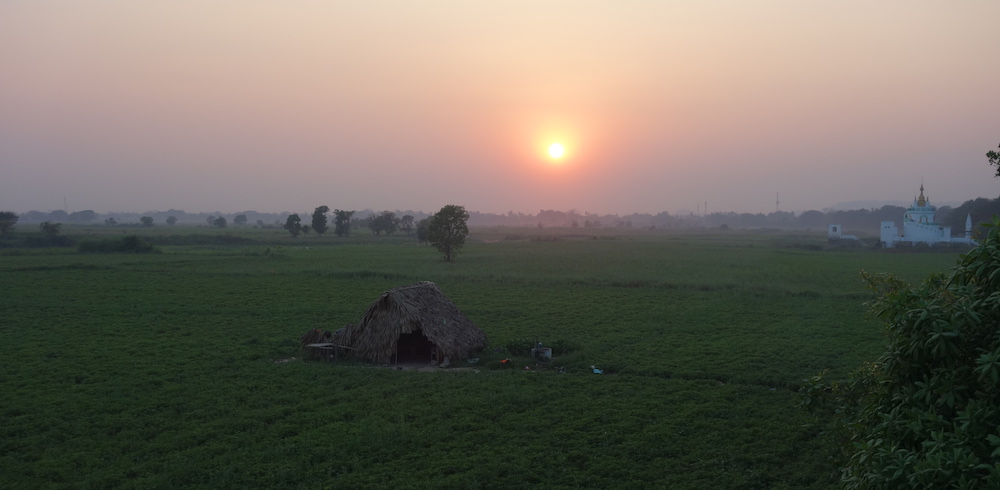 Sunset from U Bein Bridge
Sunset from U Bein Bridge